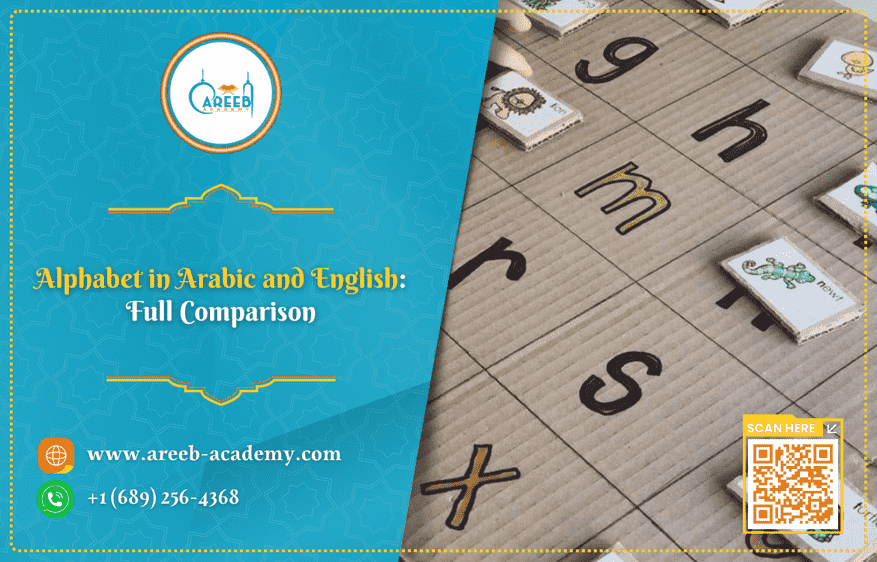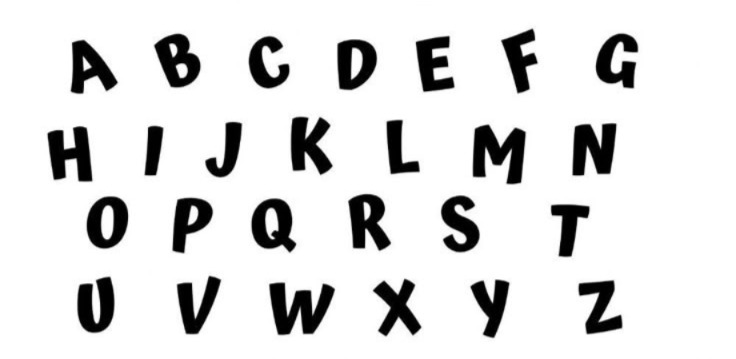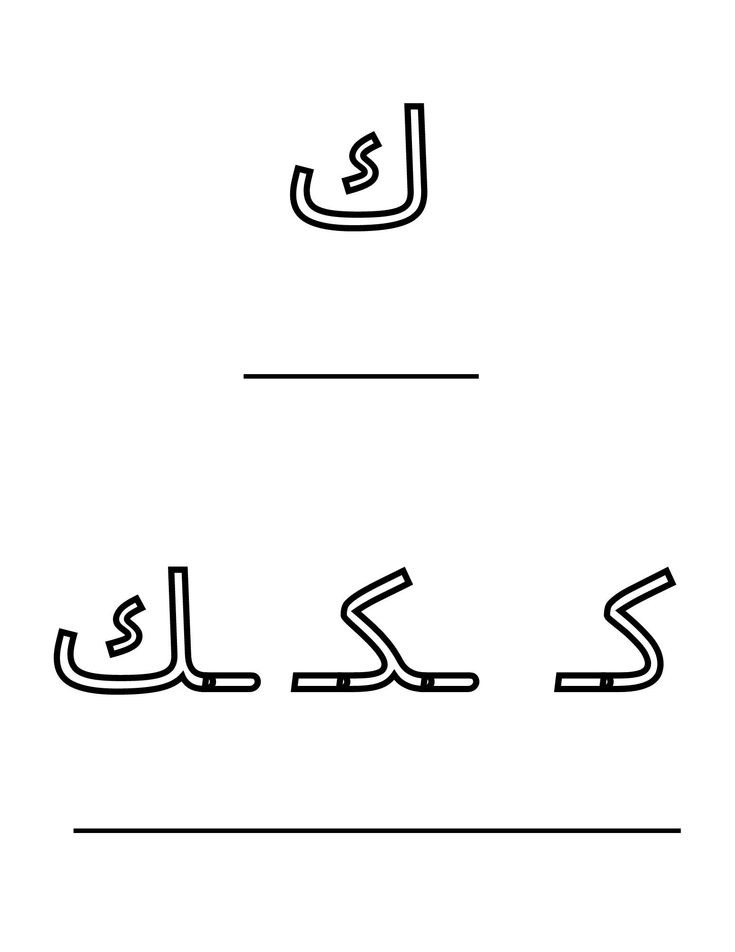
Learning the alphabet in Arabic and English opens the door to mastering two very different writing systems and sound patterns. While English letters are mostly consistent in shape and pronunciation, Arabic letters change depending on their position in a word and include unique sounds like guttural letters and emphatic consonants.
By understanding both alphabets side by side, you can develop strong reading, writing, and pronunciation skills in Arabic, even if you already know English. This comparison will help you identify similarities, differences, and tricky sounds, making your learning journey smoother and more enjoyable.
Overview of the English Alphabet

1. English Alphabet Structure
The English alphabet is composed of 26 letters, each with uppercase and lowercase forms. Modern English uses a Latin-script system that has evolved over centuries. When comparing the alphabet in Arabic and English, one key difference is that English maintains fixed letter shapes, while Arabic letters change form depending on their position in the word.
Historically, Old English was written using a runic alphabet called the futhorc in the 5th century. By the 7th century, the Latin alphabet began replacing it, and over time letters were added, modified, or removed. By the 16th century, the 26-letter English alphabet we know today had become standardized.
Out of these letters, 5 are vowels (A, E, I, O, U), 19 are consonants, and 2 letters—Y and W—can function as either vowels or consonants depending on the word. English also uses several digraphs like ch, sh, th, and oo, where two letters represent a single sound.
Unlike Arabic, which uses diacritical marks extensively to represent short vowels, English rarely uses diacritics in native words. When they do appear, it’s usually in borrowed terms such as naïve or façade
2. English Writing Direction and Pronunciation
English is written from left to right, and the pronunciation of its letters can vary widely depending on the word. Each letter has a name, and these names are often used in spelling, initialisms, or even objects named after letters—like “tee-shirt” or “em” in printing. When comparing the alphabet in Arabic and English, this is one of the biggest contrasts: English letter names don’t always match their sounds, while Arabic focuses more directly on sound–letter correspondence.
The vowels (A, E, I, O, U) usually represent vowel sounds, though letters like I and U can take on consonant roles in words such as onion and quail. The letters Y and sometimes W function as semi-vowels because they can act as either vowels or consonants depending on context.
Throughout history, several letters disappeared from English—such as thorn (þ), eth (ð), yogh (ȝ), and ligatures like Æ and Œ. Newer additions like J, U, and W only became part of the alphabet in the 16th century.
Today, English is highly phonologically flexible. Letter sounds shift depending on position, surrounding letters, and word origin. That’s why learning the alphabet is never just about memorizing shapes—it requires building a solid understanding of pronunciation and phonetics, especially when compared to the more consistent sound-letter relationship found in Arabic.
Overview of the Arabic Alphabet

1. Arabic Letters and Their Sounds
The Arabic alphabet, also called the Arabic abjad, is the script specifically codified for writing the Arabic language. It is a unicameral script, written from right to left, and consists of 28 basic letters. Each letter has up to four forms depending on its position in a word: isolated, initial, medial, and final. Most letters are connected in cursive form, although six letters—و، ز، ر، ذ، د، ا—cannot connect to the letter that follows them. Many Arabic letters look similar but are distinguished by dots, which are an essential part of the letter, indicating different sounds. For example, ب (b), ت (t), and ث (th) share the same basic shape but are distinguished by one, two, or three dots respectively. Arabic letters are always written in a connected style, and unlike Latin scripts, Arabic does not have capital letters.
2. Unique Features of Arabic Script
Arabic is an abjad, meaning the script primarily represents consonants, while short vowels are often optional in everyday writing. Unlike English, the alphabet in Arabic and English differ significantly in structure: Arabic has no uppercase or lowercase letters, and almost all letters connect to one another within a word. Their shapes change depending on whether the letter appears at the beginning, middle, or end of a word.
Arabic also includes several ligatures—combinations of letters joined into a single symbol. The most common and mandatory one is lam-alif (لا), which appears in two different forms. More complex ligatures also exist, such as the word Allah (الله), which merges multiple components into a stylistically unified shape.
Another key difference is the use of diacritics, known as ḥarakāt, which indicate short vowels, doubling of letters, and other pronunciation rules. While native speakers often omit these marks in daily writing, they are crucial in Quranic texts, children’s books, and beginner learning materials to ensure accurate reading.
3. Short Vowels and Long Vowels
Arabic has three short vowels: fatḥah (ــَـ), kasrah (ــِـ), and ḍammah (ــُـ), which appear above or below a consonant. Long vowels are represented by letters: alif (ا) for ā, wāw (و) for ū, and yāʾ (ي) for ī. These long vowels may also appear with diacritics in fully vocalized texts, such as the Quran. In addition, diphthongs like /aj/ and /aw/ are represented by combinations of these letters with short vowel marks. Other pronunciation features include gemination, marked by a shaddah (ــّـ), which doubles a consonant, and the sukūn (ــْـ), which indicates the absence of a vowel after a consonant. Mastery of these vowels and diacritics is crucial, as a small change can completely alter the meaning of a word in Arabic.
Arabic vs English Alphabet – Key Differences
| Feature | Arabic Alphabet | English Alphabet |
| Number of Letters | 28 | 26 |
| Writing Direction | Right to Left | Left to Right |
| Capital Letters | None | Present |
| Connection Between Letters | Always connected | Only in cursive |
| Script Type | Cursive | |
| Sound Consistency | Stable | Varies by word |
1. Sound Differences

Arabic and English have distinct sets of sounds, many of which are absent in the other language. Pronunciation differences can make learning either language challenging for non-native speakers.
Arabic Sounds Not in English
- Guttural sounds – Letters like ‘ain’ (ع) and ‘ghain’ (غ) are produced deep in the throat, with no direct English equivalent.
- Emphatic consonants – Certain letters are pronounced with tension in the back of the tongue, creating a “thicker” or “emphatic” sound. Examples: Saad (ص), Daad (ض), Taa (ط), Dhaa (ظ).
- Rolled ‘r’ – The Arabic raa (ر) is a trilled “r,” unlike the typical English “r.”
Note: Arabic speakers often substitute the English “p” with a “b”, as the “p” sound doesn’t exist in Arabic.
English Sounds Not in Arabic
- “P” sound – As mentioned above, absent in Arabic.
- “V” sound – Not present in Arabic; often replaced with “f”.
- Hard “g” sound – Standard Arabic lacks the hard “g” in “go” (some dialects have it).
- “NG” sound – The ending “ng” in “sing” does not exist in Arabic.
Sounds Challenging for English Speakers Learning Arabic
- Similar but distinct letters – Arabic has pairs of letters that sound similar to English speakers but are distinct in Arabic.
- K sounds – Kaaf (ك) is like English “k,” while Qaaf (ق) is a deeper, back-of-the-throat “k.”
- H sounds –
- Haa (ح): breathy “h”
- Ha (هـ): soft “h”
- Khaa (خ): guttural “kh” from the throat
- Th sounds –
- Thaa (ث): unvoiced “th” as in “think”
- Dhal (ذ): voiced “th” as in “this”
Summary
- Arabic relies on deeper throat sounds and emphatic letters.
- English relies on softer articulation and includes sounds absent in Arabic.
2. Visual and Structural Differences

One of the most noticeable differences between Arabic and English is how the letters are written and connected.
- Arabic: Letters change shape depending on their position in a word — at the beginning, middle, end, or standing alone. This gives Arabic a flowing, cursive appearance, making it look like the letters are “holding hands.” For example, the letter ب can appear as بـ, ـبـ, or ـب depending on its position.
- English: Letters generally retain the same shape regardless of their position in a word. English words are written as a sequence of separate letters, making it look more block-like and linear.
Takeaway: Learning Arabic involves recognizing letters in different forms, while English letters are visually stable and easier to identify at a glance.
How to Learn the Alphabet in Arabic and English Together
Learning both Arabic and English alphabets at the same time can be fun and effective if you focus on sounds, shapes, and practice. Here’s a structured approach:
1. Learn with Sound and Visual Cues
- Use a chart: Compare each Arabic letter to its approximate English sound. For example, ب is like B, while ث is the “th” in “think.”
- Master the sounds: Some Arabic letters, like ع (Ayn) or غ (Ghayn), have no direct English equivalent. Listen carefully to the pronunciation and practice repeatedly.
- Group similar letters: Learning letters that look alike together helps memorization. For example, the “smiley letters” ب، ت، ث can be learned as a group.
2. Practice Daily Reading and Writing
- Write the letters: Practice writing each letter to build familiarity with their shapes and how they change depending on their position in a word (initial, medial, final, or isolated).
- Use flashcards: Put the Arabic letter on one side and the English equivalent or a visual cue on the other.
- Play games: Turn memorization into fun games, like matching letters or memory challenges.
- Use mnemonics: Associate letters with vivid imagery—for example, ا can be a hitchhiking man asking for a lift, and ب can be a bathtub.
3. Use Online Tools and Courses
- Apps and worksheets: Many online platforms offer interactive lessons to practice both writing and pronunciation.
- Guided lessons: Follow structured courses to gradually learn letters in small groups.
- Consistency is key: Review letters and sounds regularly, and don’t hesitate to repeat lessons until you feel confident.
Tip: Small and Steady Wins
Don’t try to learn all letters at once. Focus on a few letters each day, gradually building a strong foundation in both alphabets. Combine listening, speaking, reading, and writing for best results.
Tips for English Speakers Learning Arabic Alphabet
Learning the Arabic alphabet can feel challenging at first, but with consistent practice and the right strategies, it becomes much easier. Focus on letter shapes, pronunciation, and writing practice.
1. Learn the Letters
- Understand letter variations: Arabic letters change shape depending on their position in a word. Many letters connect to the next one, so practicing connected writing is important.
- Master pronunciation: Pay attention to letters that are tricky for English speakers, such as ع (Ayn) or غ (Ghayn). Short vowels are indicated with diacritics above or below consonants, so learn them early.
- Use memory aids: Mnemonics can help you remember letters. For example, imagine ب as a “banana on its back with a dot underneath.”
Tip: Watching videos with visual associations can make memorization easier.
2. Practice and Immersion
- Write consistently: When learning the alphabet in Arabic and English side by side, writing practice becomes essential. Arabic is written from right to left and its letters change shape depending on context, so daily writing—starting with isolated letters, then connected forms—helps you build real muscle memory and fluency.
- Speak aloud: Reading and repeating letters out loud strengthens both recognition and pronunciation. Since the alphabet in Arabic and English differ in many of their sounds, mimicking native Arabic speakers through videos, apps, or podcasts helps you master the unfamiliar guttural and emphatic sounds that don’t exist in English.
- Use flashcards: Flashcards help strengthen recognition of both form and sound. Put the Arabic letter on one side and the transliteration or an example word on the other. Mix them regularly so your brain doesn’t rely on order.
- Find a partner or tutor: A tutor or language partner can correct your pronunciation early on, which prevents mistakes from becoming habits. Even short weekly sessions make a big difference.
3. Build Your Skills
- Listen actively: Engage with Arabic audio like cartoons, podcasts, or TV shows. Shadowing—repeating what you hear—is highly effective.
- Be consistent: Set a daily goal, such as learning 2–4 letters per day, and review previously learned letters.
- Consider a dialect: If you plan to communicate with people from a specific region, learning their dialect can be useful.
- Connect with communities: Joining Arabic-speaking communities gives real-life practice and exposure.
Starting Points for Beginners
- Focus on correct pronunciation (Makharij) from the very beginning.
- Learn to read connected letters, not just isolated ones.
- Begin with beginner-friendly courses like Noorani Qaida or other structured Arabic learning programs.
Final Thought

Learning Arabic opens doors to a rich culture, meaningful connections, and new opportunities. And when you understand the alphabet in Arabic and English, you begin to see how each language shapes the way people think, express themselves, and communicate. Language is not just a set of letters—it’s a way to think, express, and connect with people and ideas across the world. Every new word you learn, every letter you write, brings you closer to understanding a vibrant culture and expanding your horizons.
With consistent practice and the right guidance, anyone can unlock the power of Arabic—whether for travel, work, family, or personal growth
Stories of Success
Lina’s Journey:
Lina wanted to connect with her grandparents in Egypt. She started by learning the Arabic alphabet and basic words. With daily practice and one-to-one lessons, she now reads simple texts, sends messages in Arabic, and confidently participates in family conversations.
Omar’s Story:
Omar needed Arabic for his international business career. Through personalized online lessons, he mastered the alphabet, greetings, and basic conversation in just a few months, boosting both his professional and personal confidence.
Emma’s Experience:
Emma wanted to travel across the Middle East and feel more independent while exploring. She began with the Arabic alphabet and basic phrases through one-to-one online lessons. After a few months, she could read street signs, ask for directions, and order food confidently, making her trips much more enjoyable.
Lucas’s Story:
Lucas was interested in Arabic literature and wanted to read classical poetry in its original language. By practicing the alphabet, short vowels, and pronunciation daily, and with guidance from a certified teacher, he is now able to read simple poems and understand their rhythm and meaning, deepening his appreciation for the culture.
These stories show that with the right guidance and consistent effort, learning Arabic is achievable for anyone.
Take the First Step
At Areeb Academy, we make learning Arabic easy and fun:
- Personalized one-to-one lessons tailored to your pace
- Certified teachers with real teaching experience
- Flexible timing to fit your schedule
- Free trial lessons so you can start without commitment
Start your journey today—book your free trial with Areeb Academy and begin reading, writing, and speaking Arabic confidently!
FAQs
Q: How long does it take to learn the Arabic alphabet?
A: With daily practice and proper guidance, most students can recognize and write the alphabet confidently in 2–4 weeks.
Q: Do I need prior knowledge of Arabic?
A: No! Our courses start from scratch, making them perfect for absolute beginners.
Q: Can I learn online at my own pace?
A: Yes! Our lessons are flexible, and you can schedule sessions at times that suit you.
Q: Will I have a tutor?
A: Absolutely. We offer personalized one-to-one lessons with certified teachers who guide you step by step.


